-
04/12/2023
Alterações na composição corporal de pacientes queimados durante as fases de resposta ao trauma
Revista Brasileira de Enfermagem. 2023;76(6):e20230039
Resumen
Alterações na composição corporal de pacientes queimados durante as fases de resposta ao trauma
Revista Brasileira de Enfermagem. 2023;76(6):e20230039
DOI 10.1590/0034-7167-2023-0039
Visualizações0Ver maisRESUMEN
Objetivo:
evaluar alteraciones en la composición corporal de pacientes quemados mediante bioimpedancia eléctrica en las fases de respuesta al trauma.
Métodos:
estudio observacional longitudinal, realizado de octubre de 2019 a marzo de 2020. Se recogieron datos sociodemográficos, clínicos, epidemiológicos, antropométricos y de composición corporal. El análisis estadístico se realizó mediante SPSS, considerando una significancia del 5%. La comparación entre variables se realizó mediante la prueba de la t de Student pareada.
Resultados:
la muestra estuvo compuesta por 58 pacientes adultos quemados, con una edad media de 38,2±12,5 años. El área de superficie corporal media (ASC) con quemaduras fue de 10,8±7,3%. La evaluación nutricional mostró disminución del peso corporal, índice de masa corporal, masa magra y masa muscular en las fases de respuesta al trauma (p<0,005).
Conclusión:
los cambios metabólicos en las diferentes fases de la respuesta metabólica al trauma llevaron a la disminución del estado nutricional de los pacientes quemados de ambos sexos durante la hospitalización.
-
ARTÍCULO ORIGINAL04/12/2023
Hospital discharge planning in care transition of patients with chronic noncommunicable diseases
Revista Brasileira de Enfermagem. 2023;76(6):e20220772
Resumen
ARTÍCULO ORIGINALHospital discharge planning in care transition of patients with chronic noncommunicable diseases
Revista Brasileira de Enfermagem. 2023;76(6):e20220772
DOI 10.1590/0034-7167-2022-0772
Visualizações0Ver maisABSTRACT
Objective:
to analyze care transition in hospital discharge planning for patients with chronic noncommunicable diseases.
Method:
a qualitative study, based on the Care Transitions Intervention theoretical model, with four pillars of intervention, to ensure a safe transition. Twelve professionals participated in a public hospital in the countryside of São Paulo. Data were collected through observation, document analysis and semi-structured interviews.
Results:
there was a commitment of a multidisciplinary team to comprehensive care and involvement of family members in patient care. The documents facilitated communication between professionals and/or levels of care. However, the lack of time to prepare for discharge can lead to fragmented care, impairing communication and jeopardizing a safe transition.
Final considerations:
they were shown to be important elements in discharge planning composition, aiming to ensure a safe care transition, team participation with nurses as main actors, early discharge planning and family involvement.
-
ARTÍCULO ORIGINAL04/12/2023
Work and Mental Distress among Nurses in the Amazon Region of Brazil during the COVID-19 Pandemic
Revista Brasileira de Enfermagem. 2023;76(6):e20220792
Resumen
ARTÍCULO ORIGINALWork and Mental Distress among Nurses in the Amazon Region of Brazil during the COVID-19 Pandemic
Revista Brasileira de Enfermagem. 2023;76(6):e20220792
DOI 10.1590/0034-7167-2022-0792
Visualizações0Ver maisABSTRACT
Objective:
To assess the relationship between psychopathological symptoms and the social, clinical, and occupational profile of nurses in the Amazon region of Brazil during the COVID-19 pandemic.
Methods:
A descriptive cross-sectional online study was conducted in 2020 with 261 nurses. The Symptom Assessment Scale-40 was utilized.
Results:
The presence of pre-existing conditions before the pandemic was associated with psychotism (p=0.044). Experiencing constraints and/or violence at work during the pandemic was associated with somatization (p=0.025), and working hours were associated with anxiety (p=0.025). Nurses predominantly exhibited symptoms related to fear (33.7%), tension (34.5%), and a sense that something is wrong in the mind (22.6%).
Conclusions:
A significant association was observed between working hours and anxiety symptoms, the experience of constraints and/or violence at work during the COVID-19 pandemic and somatization symptoms, as well as between pre-existing conditions and psychotism symptoms related to COVID-19.
-
ARTÍCULO ORIGINAL04/12/2023
Social representation of spiritual surgeries in Umbanda: culture, religion and contributions of nursing theory
Revista Brasileira de Enfermagem. 2023;76(6):e20220787
Resumen
ARTÍCULO ORIGINALSocial representation of spiritual surgeries in Umbanda: culture, religion and contributions of nursing theory
Revista Brasileira de Enfermagem. 2023;76(6):e20220787
DOI 10.1590/0034-7167-2022-0787
Visualizações1Ver maisABSTRACT
Objective:
to analyze the social representation of spiritual surgeries in Umbanda for Bantu-Amerindian ritual mediums and their contributions to the cross-cultural care proposed by Madeleine Leininger.
Methods:
a descriptive-exploratory, qualitative study, supported by the procedural approach of Social Representation Theory and Transcultural Nursing Theory, carried out with 30 Umbanda mediums of the Bantu-Amerindian ritual through interviews, submitted to the Iramuteq software for lexical analysis.
Results:
mostly women, white, with an average of 46 years old and approximately 14 years of practice in Umbanda participated. The social representation of spiritual surgeries in Umbanda is objectified and anchored through a biomedical vision of care, encompassing a set of beliefs, values and practices as religious treatments, through faith, whose main objective is healing.
Final considerations:
spiritual surgeries are a form of transcultural care, according to Madeleine Leininger’s propositions, as they integrate the culture of a group through health care in Umbanda.
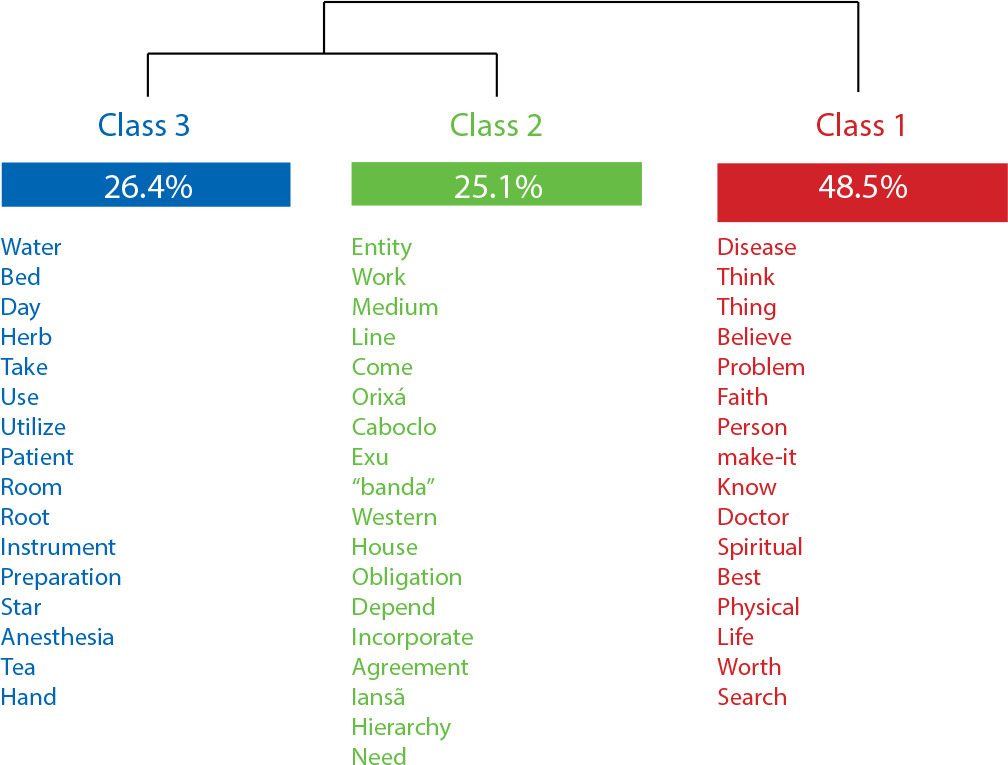
-
ARTÍCULO ORIGINAL04/12/2023
Sexual behavior according to undergraduate students: perspective of cross-cultural nursing and intersectional framing
Revista Brasileira de Enfermagem. 2023;76(6):e20220786
Resumen
ARTÍCULO ORIGINALSexual behavior according to undergraduate students: perspective of cross-cultural nursing and intersectional framing
Revista Brasileira de Enfermagem. 2023;76(6):e20220786
DOI 10.1590/0034-7167-2022-0786
Visualizações0Ver maisABSTRACT
Objective:
to discuss undergraduate students’ sexual behavior from the perspective of social markers and cross-cultural care proposed by Madeleine Leininger.
Methods:
descriptive-exploratory qualitative research, with a theoretical-philosophical foundation in the Transcultural Theory. Convenience sample was composed of 57 young people from two universities in Rio de Janeiro. The focus groups’ content were analyzed lexically using the IRAMUTEQ software.
Results:
four classes emerged: Young people’s sexual scripts: between the fear of an unplanned pregnancy and the risk of exposure to sexually transmitted infections; Affective relationships: trust in steady sexual partners, apparent sense of security and disuse of condoms; Sexual practices, gender and cultural determinants: distinction in men’s and women’s role; Sexual partnerships, negotiation of condom use and vulnerability to sexually transmitted infections.
Final considerations:
challenges are perceived for the attention to undergraduate students’ sexual health, who verbalized risky sexual behaviors due to sociocultural vulnerabilities.
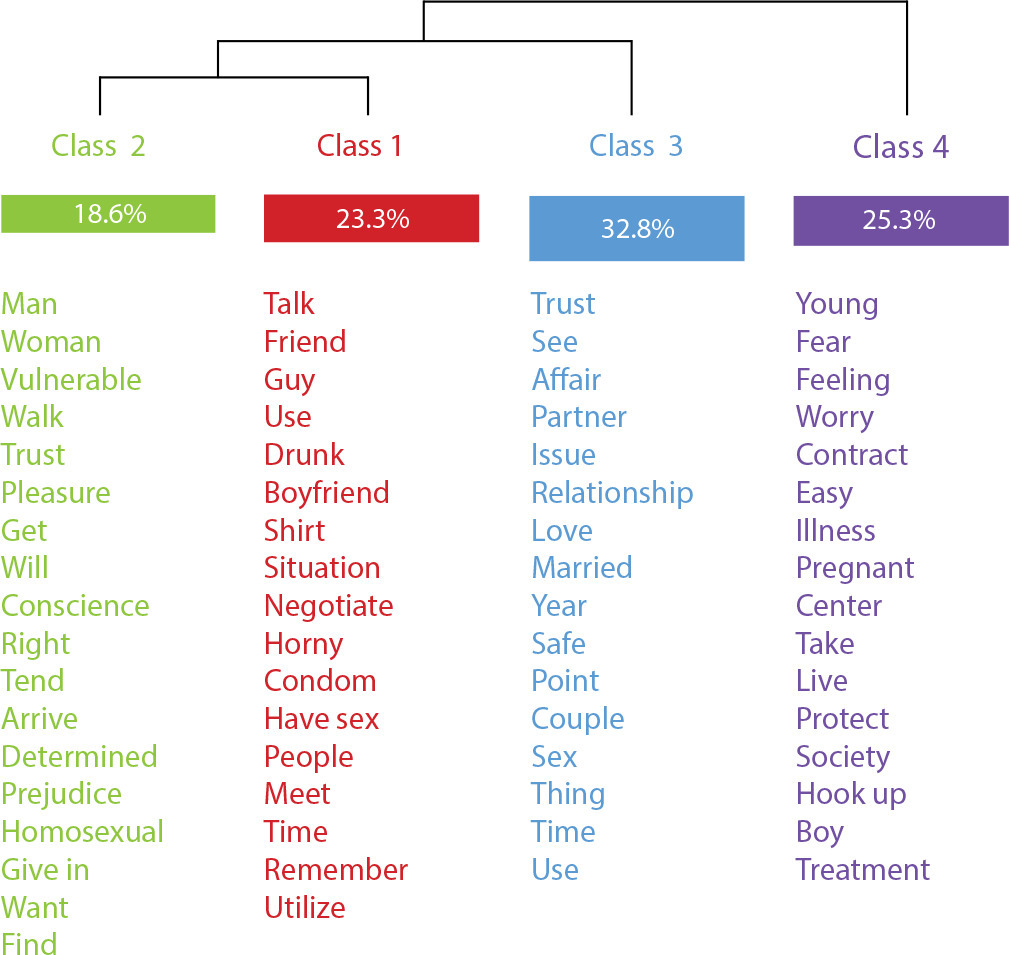
-
04/12/2023
Sleep quality of nurses who worked in coping with COVID-19: an integrative review
Revista Brasileira de Enfermagem. 2023;76(6):e20230007
Resumen
Sleep quality of nurses who worked in coping with COVID-19: an integrative review
Revista Brasileira de Enfermagem. 2023;76(6):e20230007
DOI 10.1590/0034-7167-2023-0007
Visualizações0Ver maisABSTRACT
Objective:
to analyze sleep quality of nurses who worked coping with COVID-19 in scientific evidence.
Methods:
an integrative review, carried out in seven databases, including studies between December 2021 and June 2022, without language restrictions. The sample consisted of 15 primary studies.
Results:
nurses working in hospital, intensive care, outpatient care and teaching institutions constitute a vulnerable group for sleep disorders: latency, duration, efficiency and quality. The disorders identified involved insomnia at varying levels of severity: daytime dysfunction and morning sleepiness. Night work and low capacity for self-care were determinants of impaired sleep patterns.
Final considerations:
the COVID-19 pandemic contributed to greater vulnerability of nurses to changes in sleep, requiring strategies for risk management and well-being promotion.
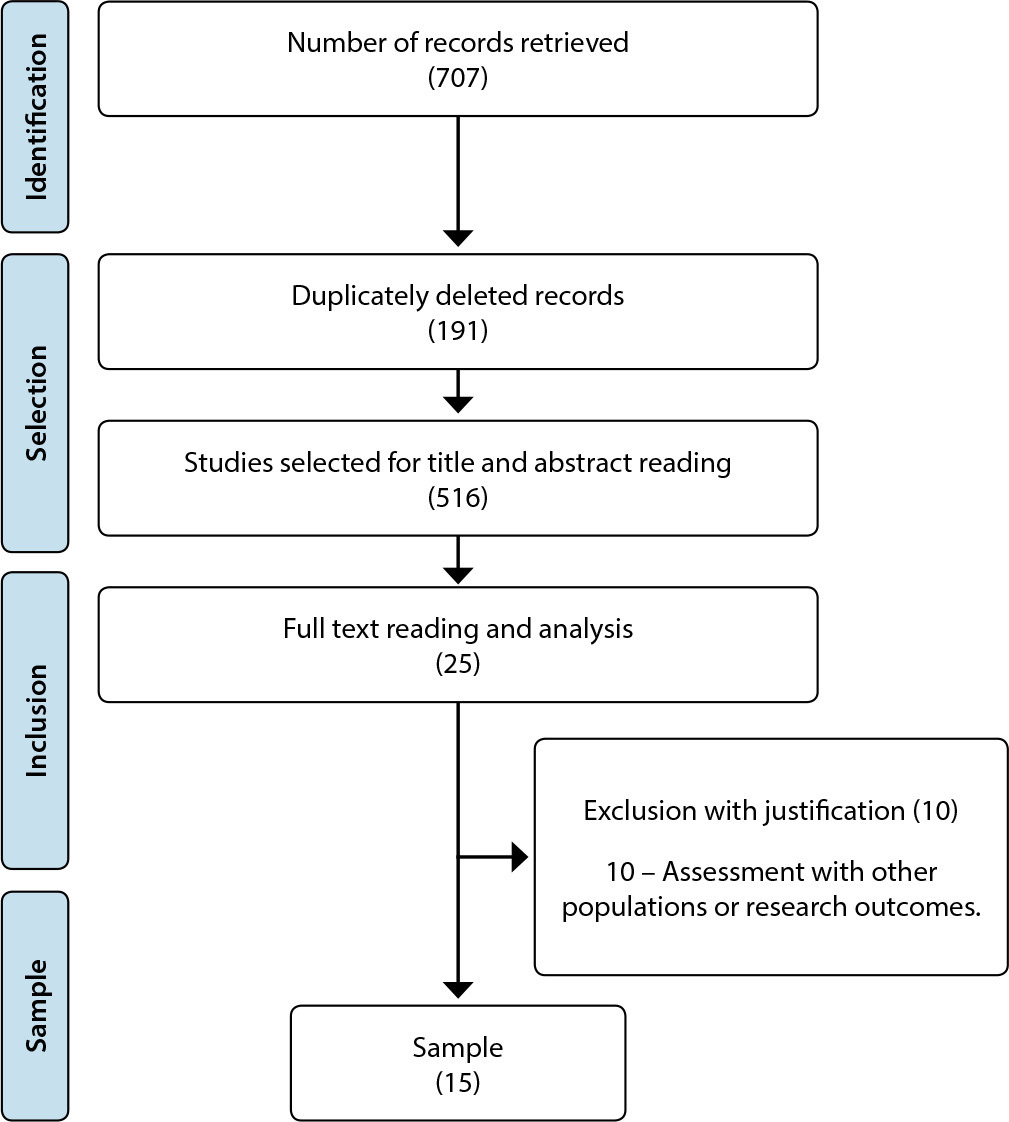
-
ARTÍCULO ORIGINAL04/12/2023
Psychometric Properties of an Instrument for Assessing University Administrators’ Knowledge on Gender-Based Violence
Revista Brasileira de Enfermagem. 2023;76(6):e20220770
Resumen
ARTÍCULO ORIGINALPsychometric Properties of an Instrument for Assessing University Administrators’ Knowledge on Gender-Based Violence
Revista Brasileira de Enfermagem. 2023;76(6):e20220770
DOI 10.1590/0034-7167-2022-0770
Visualizações0Ver maisABSTRACT
Objective:
To evaluate the factorial structure of the instrument measuring university administrators’ knowledge of gender-based violence.
Methods:
This cross-sectional methodological study was conducted from August to November 2020 with 101 university administrators. Data on demographic and functional characteristics were collected, and the “QUEST VBG UNIV” instrument was applied. Descriptive analysis was performed, the structure of the questionnaire was assessed using exploratory factor analysis (EFA), and the stability of the factors was verified through ORION and FDI tests.
Results:
Of the original 38 items across the 4 sections of the questionnaire, 19 were retained within 2 factors, with appropriate factor loadings. Factor 1 had an explained variance of 15.69%, and Factor 2 had an explained variance of 9.10%. The reliability was deemed satisfactory (ORION > 0.900, FDI > 0.900).
Conclusions:
The questionnaire presented a valid and reliable factorial structure for measuring knowledge about gender-based violence, thereby representing a suitable option for situational assessments in universities.
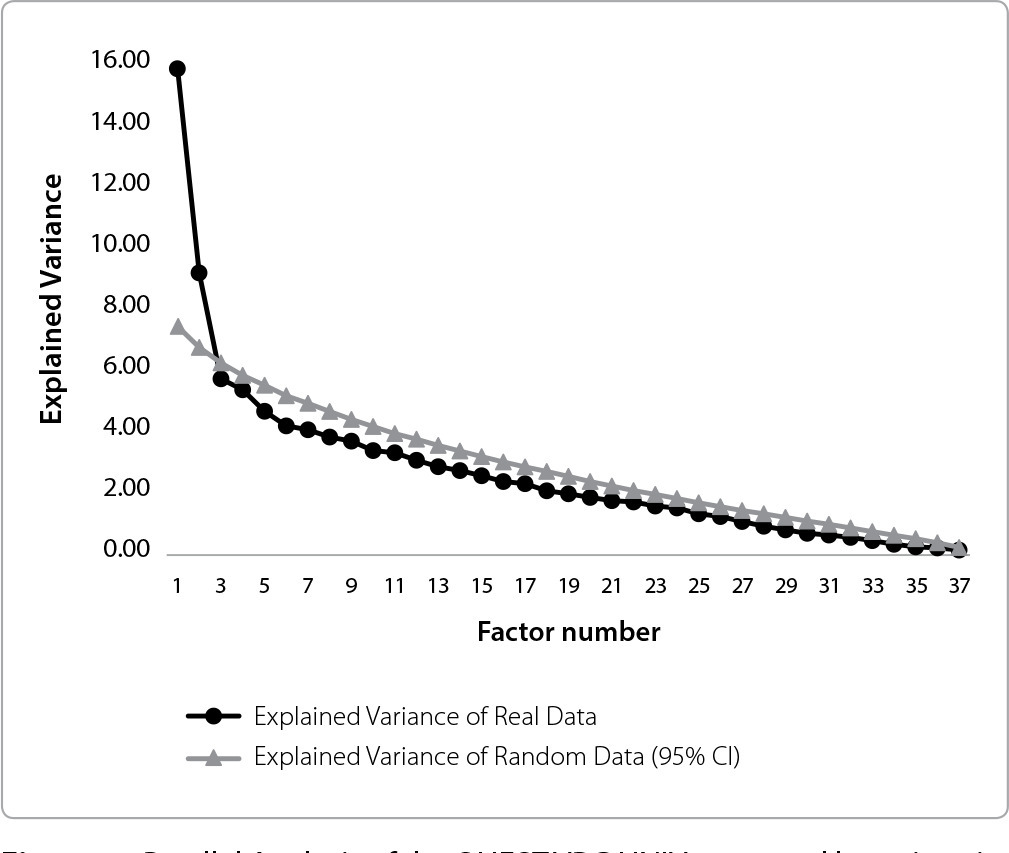
-
04/12/2023
Maternal Concerns in Home Care for the Premature Newborn: An Integrative Review
Revista Brasileira de Enfermagem. 2023;76(6):e20220769
Resumen
Maternal Concerns in Home Care for the Premature Newborn: An Integrative Review
Revista Brasileira de Enfermagem. 2023;76(6):e20220769
DOI 10.1590/0034-7167-2022-0769
Visualizações0Ver maisABSTRACT
Objective:
To identify and analyze the scientific literature, both national and international, concerning the primary maternal concerns about caring for premature newborns at home.
Methods:
This integrative review is based on the guiding question: “What scientific publications from 2012 to 2021 address maternal concerns about the care of premature newborns at home?”. Searches were conducted in the electronic databases: Embase, Medline, Web of Science, Lilacs, Scielo, and Cochrane Library.
Results:
A total of 21 articles were identified. The qualitative analysis showed that maternal concerns pertained to breastfeeding, hygiene, sunbathing practices, managing infant colic, identifying signs, symptoms, and clinical changes, temperature control, and the third phase of the kangaroo method.
Conclusions:
Maternal uncertainties underscore the importance of enhancing strategies focused on supporting families and ensuring continued care for neonates at home.
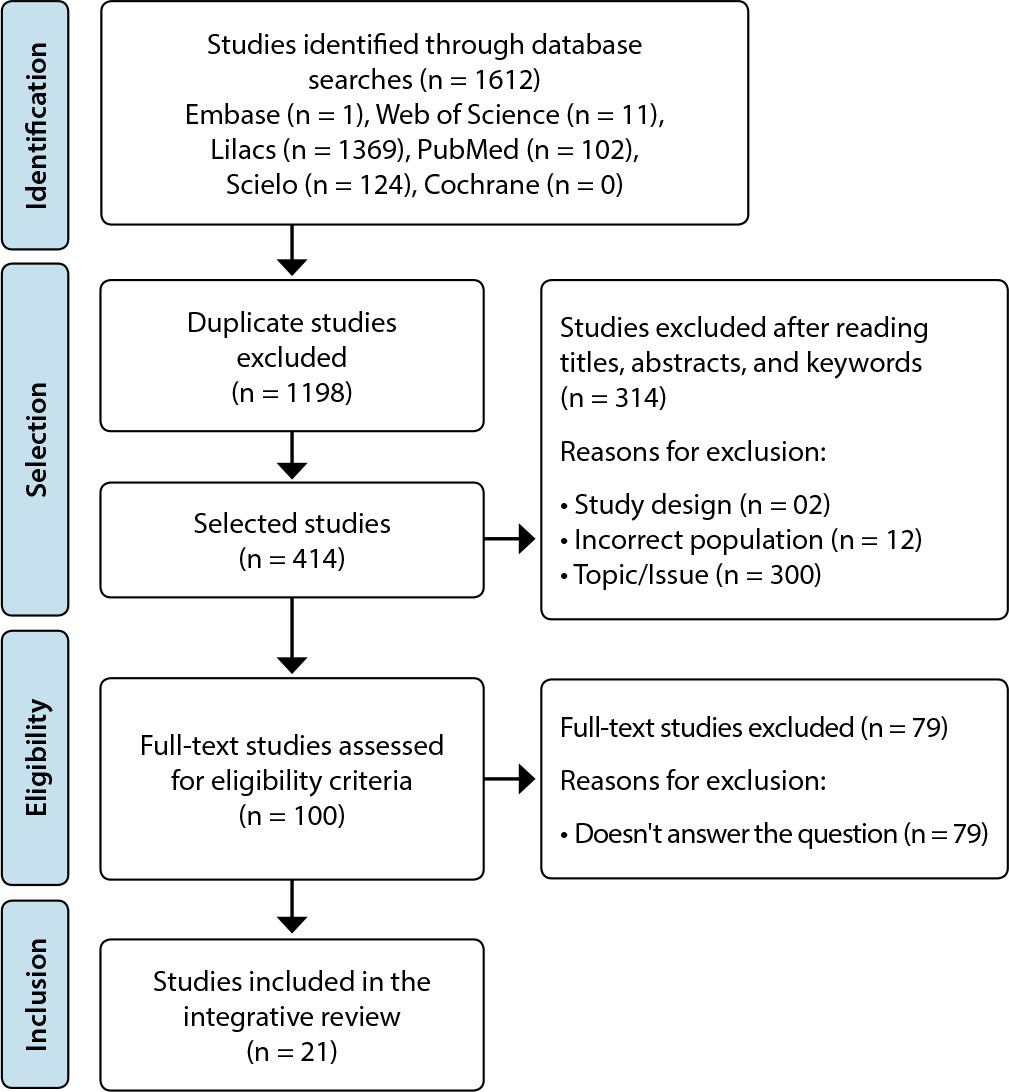
-
ARTÍCULO ORIGINAL19/08/2019
Interrupções e carga de trabalho de enfermagem durante a administração de medicamentos
Revista Brasileira de Enfermagem. 2019;72(4):1001-1006
Resumen
ARTÍCULO ORIGINALInterrupções e carga de trabalho de enfermagem durante a administração de medicamentos
Revista Brasileira de Enfermagem. 2019;72(4):1001-1006
DOI 10.1590/0034-7167-2018-0680
Visualizações0RESUMO
Objetivo:
Investigar fontes e causas das interrupções durante o processo de administração de medicamentos realizado pela equipe de enfermagem e mensurar sua frequência, duração e impacto sobre a carga de trabalho.
Métodos:
Observacional com tempos cronometrados durante 121 rodadas de medicação (preparo, administração e documentação) realizadas por 15 enfermeiros e nove técnicos de enfermagem em Unidade de Terapia Intensiva Neonatal no interior de São Paulo.
Resultados:
Foram observadas 63 (52,1%) interrupções. Em cada rodada, ocorreram de 1-7totalizando 127, principalmente na fase de preparo, 97 (76,4%). As principais fontes constituíram-se em: equipe de enfermagem − 48 (37,8%) − e autointerrupções − 29(22,8%). Já as principais causas: troca de informações – 54 (42,5%) − e conversa paralela – 28 (22%). O aumento do tempo médio variou de 53,7 a 64,3% (preparo) e de 18,3 a 19,2% (administração) p≤0,05.
Conclusão:
Interrupções no processo medicamentoso são frequentes, interferem na carga de trabalho da enfermagem e podem refletir na segurança do cuidado.
Palavras-chave: Carga de TrabalhoCuidados de EnfermagemFluxo de TrabalhoGerenciamento do TempoSegurança do PacienteVer mais -
ARTÍCULO ORIGINAL07/03/2022
Pacientes críticos com COVID-19: perfil sociodemográfico, clínico e associações entre variáveis e carga de trabalho
Revista Brasileira de Enfermagem. 2022;75:e20210119
Resumen
ARTÍCULO ORIGINALPacientes críticos com COVID-19: perfil sociodemográfico, clínico e associações entre variáveis e carga de trabalho
Revista Brasileira de Enfermagem. 2022;75:e20210119
DOI 10.1590/0034-7167-2021-0119
Visualizações0RESUMO
Objetivo:
Identificar o perfil sociodemográfico e clínico de pacientes com COVID-19; mensurar carga de trabalho e realizar associações entre variáveis clínicas.
Métodos:
Estudo transversal, 150 pacientes adultos com COVID-19 em unidade de terapia intensiva (marçojunho/2020). Dados do prontuário eletrônico nas primeiras 24 horas de internação: sexo, idade, escolaridade, procedência, comorbidades, ventilação mecânica invasiva, manobra prona, terapia renal substitutiva, lesão por pressão, Braden, Nurging Activies Score, diagnósticos e cuidados de enfermagem. Análise estatística descritiva, associações entre variáveis clínicas e grupo etário.
Resultados:
Sexo masculino (55,3%); idade média, 59 anos; hipertensos (57,3%); obesos (50,6%); diabéticos (34%); ventilação mecânica invasiva (66,7%); pronados (20,6%); hemodiálise (15,3%); média do Nursing Activities Score, 86%. Encontraram-se 28 diagnósticos de enfermagem e 73 cuidados.
Conclusão:
Pacientes necessitaram de suporte de alta complexidade. Houve associação significante entre lesão por pressão e carga de trabalho com manobra prona. Os diagnósticos e cuidados de enfermagem refletem necessidades dos pacientes críticos.
Palavras-chave: Carga de TrabalhoDiagnóstico de EnfermagemInfecções por CoronavirusProcesso de EnfermagemUnidades de Terapia IntensivaVer mais -
ARTÍCULO DE REVISIÓN11/06/2021
Mental health interventions implemented in the COVID-19 pandemic: what is the evidence?
Revista Brasileira de Enfermagem. 2021;74:e20200635
Resumen
ARTÍCULO DE REVISIÓNMental health interventions implemented in the COVID-19 pandemic: what is the evidence?
Revista Brasileira de Enfermagem. 2021;74:e20200635
DOI 10.1590/0034-7167-2020-0635
Visualizações0Ver maisABSTRACT
Objective:
to map the evidence on mental health interventions implemented during the COVID-19 pandemic.
Method:
this scoping review was carried out in the MEDLINE/PubMed, SCOPUS, Web of Science, PsycINFO, and Science Direct databases and in the medRxiv, bioRxiv, and PsyArXiv preprints servers using the descriptors “Covid-19”, “coronavirus infection”, “coronavirus”, “2019-nCoV”, “2019 novel coronavirus disease”, “SARS-CoV-2”, “health personnel”, “general public”, and “mental health”.
Results:
eight articles were selected and categorized into mental health interventions for the population, among which mental health interventions were for people diagnosed with suspicion/confirmed COVID-19 and mental health interventions for health professionals.
Conclusion:
telemonitoring, virtual games and strategies focused on social support and muscle relaxation techniques, characterized as non-pharmacological and low-cost, were shown as interventions, which, since they are effective, need to be encouraged and included in mental health care practices.
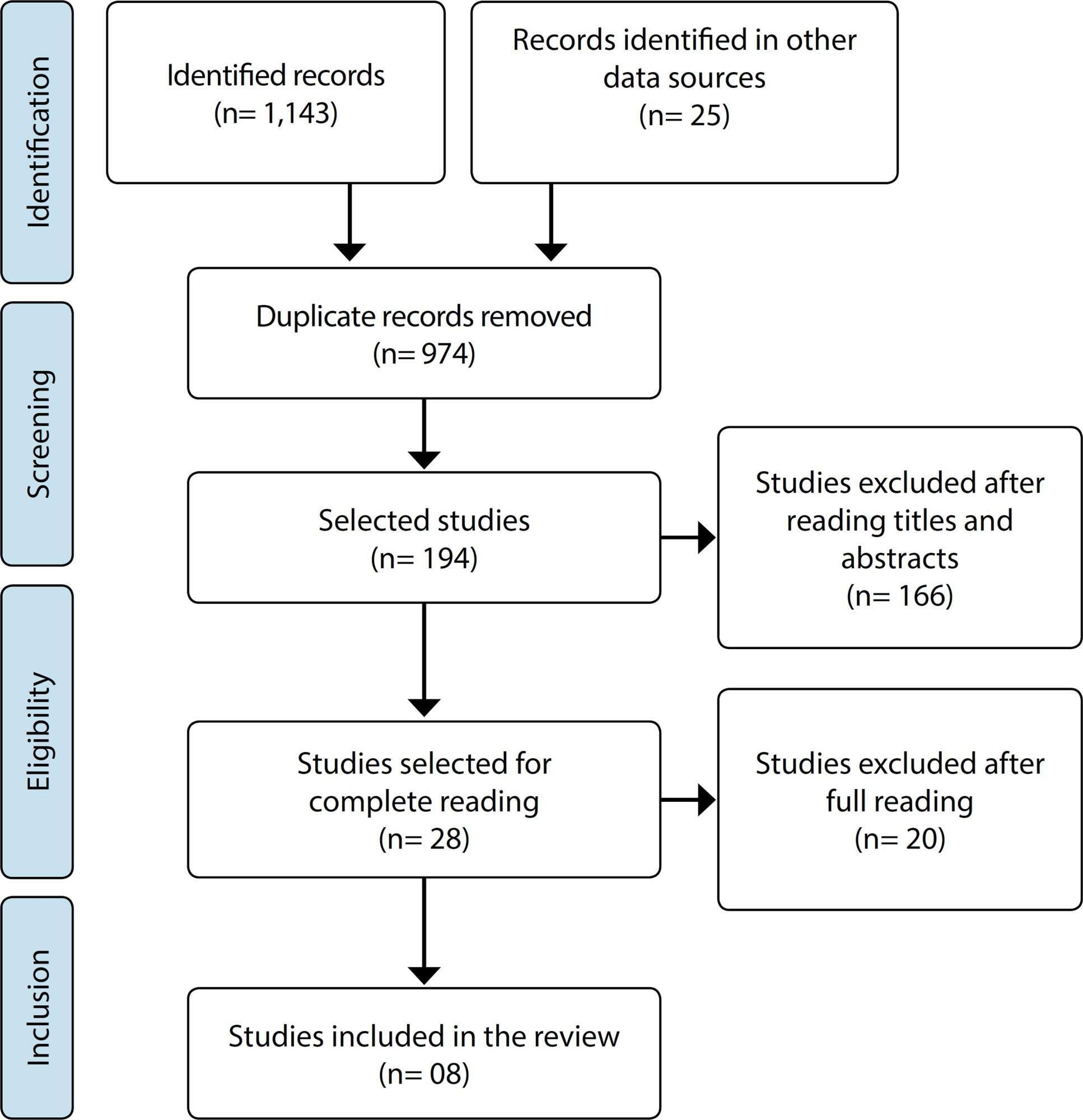
-
16/07/2021
Qualidade do sono e sua associação com os sintomas de menopausa e climatério
Revista Brasileira de Enfermagem. 2021;74:e20201150
Resumen
Qualidade do sono e sua associação com os sintomas de menopausa e climatério
Revista Brasileira de Enfermagem. 2021;74:e20201150
DOI 10.1590/0034-7167-2020-1150
Visualizações0Ver maisRESUMO
Objetivo:
Avaliar a qualidade do sono em mulheres menopausadas e sua associação com os sintomas relacionados a esse período.
Método:
Estudo transversal, analítico e correlacional. O sono foi avaliado por meio do Índice de Qualidade do Sono de Pittsburgh; e os sintomas do climatério, pelo Menopause Rating Scale. Para a comparação do escore total e de cada domínio do Menopause Rating Scale com a classificação do Índice de Qualidade do Sono de Pittsburgh (PSQI), foi utilizado o teste não paramétrico U de Mann-Whitney. Considerou-se valor p<0,05 como significante.
Resultados:
Foram classificadas 261 mulheres (67,8%) como más dormidoras. Houve correlação positiva e significativa dos escores da escala do sono com o escore total da menopausa e seus domínios. As mulheres categorizadas como más dormidoras apresentaram piores escores na escala de sintomas de menopausa.
Conclusão:
Mulheres com pior qualidade do sono revelaram maior severidade dos sintomas relacionados à menopausa.
-
ARTÍCULO ORIGINAL21/10/2019
“À espera de um milagre”: espiritualidade/religiosidade no enfrentamento da doença falciforme
Revista Brasileira de Enfermagem. 2019;72(6):1554-1561
Resumen
ARTÍCULO ORIGINAL“À espera de um milagre”: espiritualidade/religiosidade no enfrentamento da doença falciforme
Revista Brasileira de Enfermagem. 2019;72(6):1554-1561
DOI 10.1590/0034-7167-2018-0635
Visualizações1Ver maisRESUMO
Objetivo:
Compreender a Espiritualidade/Religiosidade vivenciadas por pessoas com doença falciforme e sua influência sobre o enfrentamento da doença.
Método:
Estudo qualitativo, descritivo, exploratório, realizado no Estado da Bahia. Participaram 29 pessoas que responderam a entrevistas semiestruturadas. O material empírico foi submetido a análise de conteúdo.
Resultados:
Pessoas com doença falciforme vivenciam a Espiritualidade/Religiosidade motivadas pela esperança de um milagre e por medo da morte; seus ritos são as leituras de textos religiosos, orações individuais e em grupo, e frequência a cultos; os efeitos sobre sua saúde são: conforto através do coping de comparação, alívio da ansiedade, apoio social, mudança no estilo de vida, porém a Espiritualidade/Religiosidade podem manifestar-se prejudicadas.
Considerações finais:
Este estudo ressalta a necessidade da qualificação dos profissionais de saúde para a abordagem das questões espirituais dessas pessoas adoecidas, com a preocupação de diagnosticar possíveis sofrimentos, angústias e assim prestar auxílio, conforto e fortalecer os vínculos espirituais desses indivíduos.
-
ARTÍCULO ORIGINAL18/10/2022
Clinical simulation as a Nursing Fundamentals teaching method: a quasi-experimental study
Revista Brasileira de Enfermagem. 2022;75(2):e20201155
Resumen
ARTÍCULO ORIGINALClinical simulation as a Nursing Fundamentals teaching method: a quasi-experimental study
Revista Brasileira de Enfermagem. 2022;75(2):e20201155
DOI 10.1590/0034-7167-2020-1155
Visualizações0Ver maisABSTRACT
Objectives:
to evaluate students’ knowledge gain after the implementation of clinical simulation in Nursing Fundamentals disciplines.
Methods:
a quasi-experimental intervention was carried out with 60 students, distributed in comparison and intervention groups, who underwent traditional teaching and traditional teaching associated with simulated teaching, respectively. Pre-test and post-test instruments were applied to both groups.
Results:
after analyzing the students’ performance through the applied instruments, both groups had a cognitive evolution along with the taught content, however, when compared, the intervention group obtained a higher knowledge gain than the comparison group (p = 0.016), demonstrating progressive and increasing improvement with the use of the methodology.
Conclusions:
simulated teaching significantly helps students in gaining technical-cognitive knowledge. Therefore, it is recommended to adhere to the use of this methodology for teaching Nursing Fundamentals.
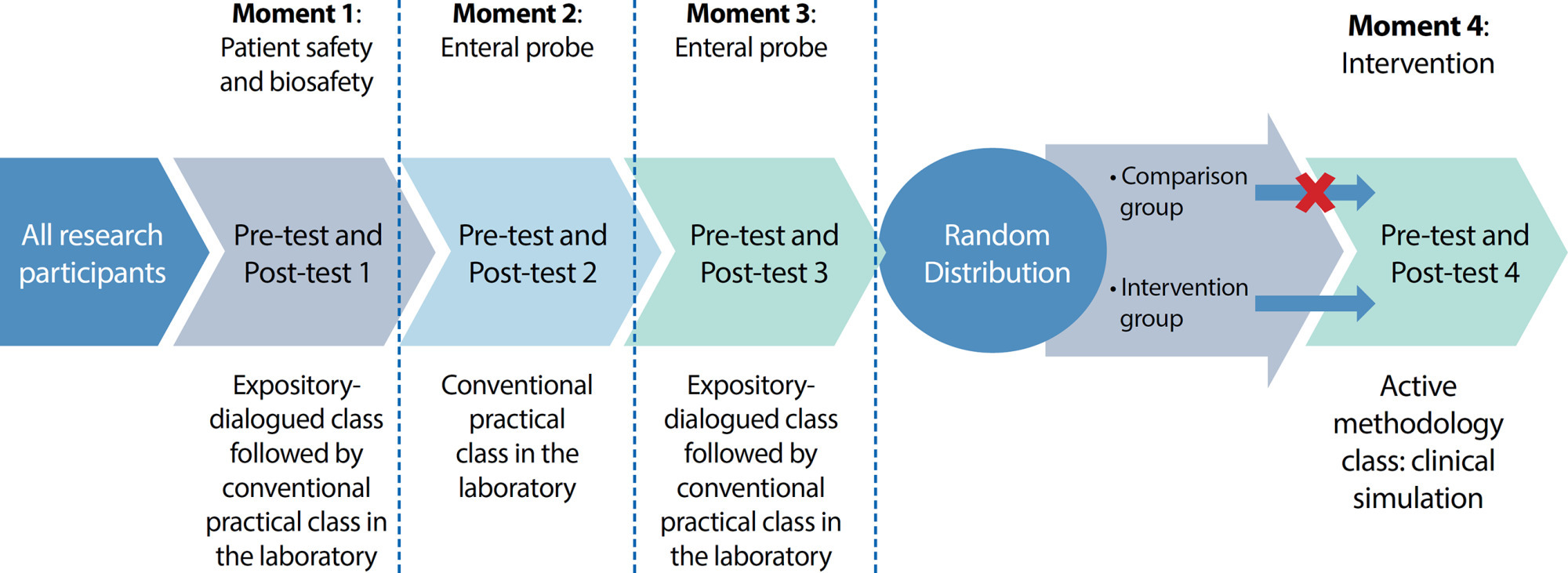
-
ARTÍCULO ORIGINAL10/02/2020
Depression among nursing students and its association with academic life
Revista Brasileira de Enfermagem. 2020;73(1):e20180173
Resumen
ARTÍCULO ORIGINALDepression among nursing students and its association with academic life
Revista Brasileira de Enfermagem. 2020;73(1):e20180173
DOI 10.1590/0034-7167-2018-0173
Visualizações0Ver maisABSTRACT
Objective:
To measure the levels of depression among Nursing students from a public institution of higher education and the association with aspects of academic life.
Method:
Analytical and quantitative study with 203 students from a higher education institution that uses active methodologies. We used Beck’s Depression Inventory and the Likert type scale of academic factors.
Results:
We verified that 19.2% had moderate or severe levels of depression. Higher levels of depression were associated with female gender (p=0.003), working more than 40 hours per week (p=0.047), spending more than 90 minutes to reach academic activities (p=0.043) and with 12 academic factors specific to routines of the studied institution.
Conclusion:
The results contribute to managers’ and professors’ reflection and analysis concerning nursing students’ mental health, in addition to indicating in which aspects there is a need to provide greater support to these students.
-
ARTÍCULO ORIGINAL01/10/2022
Factors associated with vulnerability and fragility in the elderly: a cross-sectional study
Revista Brasileira de Enfermagem. 2022;75(2):e20200399
Resumen
ARTÍCULO ORIGINALFactors associated with vulnerability and fragility in the elderly: a cross-sectional study
Revista Brasileira de Enfermagem. 2022;75(2):e20200399
DOI 10.1590/0034-7167-2020-0399
Visualizações0Ver maisABSTRACT
Objectives:
to assess factors associated with vulnerability and fragility in the elderly.
Methods:
crosssectional study with 384 elderly people in Fortaleza, Ceará. The Vulnerable Elders Survey and Clinical-Functional Vulnerability Index – 20 were used. Chi-square and Fisher’s exact tests were used for associations. In the analysis of the combined influence of risk factors, the stepwise logistic regression and multinomial regression methods were adopted.
Results:
251 (65.4%) non-vulnerable and 133 (34.6%) vulnerable elders. From the vulnerable elders analyzed, 42 (30.9%) are at high risk for frailty. Factors associated with vulnerability: age, gender, presence of comorbidities, hypertension, diabetes, osteoporosis and use of polypharmacy. There is a 30% increase in the chance of vulnerability for each additional drug. Physical activity reduces the chance of vulnerability by 60%. Factors associated with frailty: educational level; self-perception of health; comorbidities; polypharmacy.
Conclusions:
it is important to pay attention to the presence of arterial hypertension, osteoporosis, polypharmacy, and encourage the practice of physical activity.
Búsqueda
Buscar en:
Nuvem de Tags
Adolescente (85) Atenção Primária à Saúde (239) COVID-19 (91) Criança (91) Cuidados de Enfermagem (269) Educação em Enfermagem (151) Educação em Saúde (139) Enfermagem (930) Enfermagem Pediátrica (86) Estudantes de Enfermagem (77) Estudos de Validação (131) Família (87) Idoso (208) Promoção da Saúde (99) Qualidade de Vida (104) Saúde do Trabalhador (86) Saúde Mental (145) Saúde Pública (82) Segurança do Paciente (150) Tecnologia Educacional (100)



